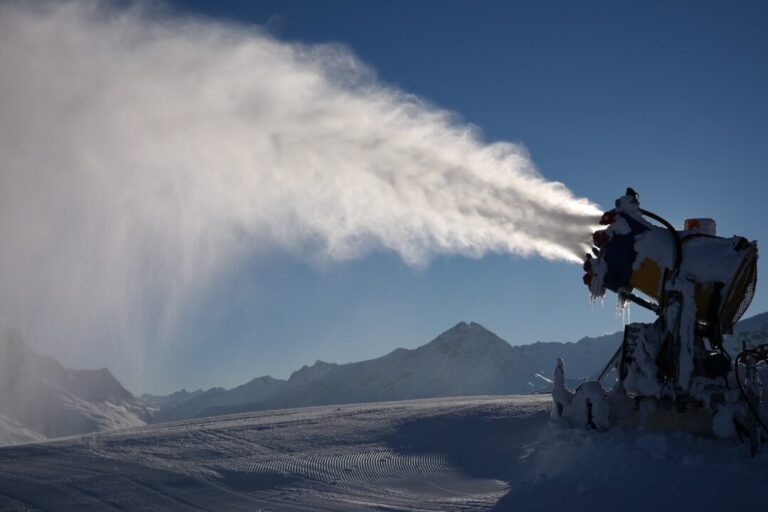You’ve been working full-time for over ten years now. With the experience and knowledge you gained throughout the years, you finally decided to take another important step in your life: Reaching audiences and gaining ground in social media as an expert, or say, an influencer in modern terms. But be aware it is not the design of the blog page you prepared thoroughly or the advertising on social media that would take you to your target audience. For that, you need two special keywords and the skill to get to the bottom: Quality and SEO.
When we talk about quality, it is not only described by your knowledge in your field of expertise but how you can convey information to people who need to become more familiar with it or want to learn more about it. Having been a coder for many years wouldn’t mean that you could put that knowledge into text within a fine structure, or having spent years in a newsroom wouldn’t make you a social media content manager. Therefore, first, you need to adjust your perspective for your new goal, expand your skills, add new ones to reach audiences, and, most importantly, become sustainable online. For that, you need to have a certain level of quality with your content, understand the fundamentals of SEO optimisation, and add to it in time to do the latter.
So, let’s look at the ten tips to guarantee quality and smooth SEO optimisation for the content you want to produce. Remember, the quality doesn’t come from the display, expensive SEO tools or advertising but good writing and editing skills merged with the optimum SEO tools.
1- Pinpoint your content type: What will you write about? Thousands of things may flow inside your head following years of experience, but you need to know what the audience wants or what they require to improve things. So, even if you’re almost set in your mind about the content you want to produce, you must do initial research to see what other people in your area offer to the audiences and in what format. They may have already thought about the things you want to talk about. Can you tell something different about the same thing from a different perspective to a diverse age group or business area? You may get the idea of starting a podcast without wasting any time and get new ideas for producing content and marketing them on social media. Don’t be isolated in your mind; first, look around to understand how to react. In digital, things don’t apply according to the book.
2- Test & improve your writing skills: You want to write about coding. You know about it well. But do you know how to write? It is more challenging than it may appear in your head, especially in an era taking attention through writing is the hardest. To write a good article, you need to learn some basic steps before you start typing; for that, it would be wise to read about tips and rules for forming a good article. Some essential tips come along with your planning: Never jump from topic to topic and get lost in the variety of things in your area and eventually collide with ancient and trending topics, repeating the same stuff or boring the audience with a random style of writing. It would be best to stick to a topic and provide them as a series of articles and move on with the other after you convey all the information you have. Setting a certain length for your articles and staying aware of word count is crucial, as most readers have little patience but high curiosity. Therefore, follow a good structure to write about the topic you want to decrypt and make it fun to read.
3- Discover tools to improve your writing: Writing in English is your best advantage, providing a potential reach to over two billion people. But are you able to write in good English? For a non-native, getting lost in British and American English is the main thing, and yes, it does matter. Native or not, you must consider the readability of your articles and use a rich vocabulary instead of a static and boring one. Having no incoherencies, not using too long sentences and being diligent about the words you’re using would be helpful to convey the meaning of the information you want to present to your readers. Therefore, don’t be shy and improve your skills in writing and editing by checking out some language tools to improve your paraphrasing and vocabulary skills and also check your spelling. If you fail in your writing, you fail in the essential step of online content.
4- Use attributes and sources properly: Writing is the fundamental method of conveying information, the information you gathered and learned from other sources through the years and kept in the writing format, digital or not digital. Therefore, if you are not writing an opinion article but carry the goal of telling or teaching something, you must build trust and ensure your quality by using reliable sources and properly attributing them. Supporting your knowledge with academic or well-known, well-established online or printed sources is a huge plus, underlining your knowledge and boosting your reliability among readers. Not being an egoist and providing a multitude of good sources in your articles is also a plus for readers, who can expand their view on a topic in a short time thanks to you. Attribution by complying with copyrights is also a good sign of your quality and respect to other online sources, providing a respected view for your blog. If you don’t even care about attribution, open a YouTube page and unleash your smartmouth if this is easier for you.
5- Use the keywords properly: Everything has to be appropriately written, from the title to the body of your article. Keywords are the most important to scatter among the article, starting from the title. But this doesn’t mean you can jump on the clickbait wagon and use a few words all over the article 20 times. This would disrupt the article’s structure and, most importantly, irritate the readers. Mentioning a piece of certain information twice is sometimes necessary according to the topic and the article’s structure, but using the same information multiple times, believing that it would help your SEO, would only appear to take your audience as idiots and annoy them. Set a group of keywords for your article and use them correctly in the article, not appearing too few or too many but scattered properly along the article. The more you use a rich vocabulary associated with your keywords, the better quality and SEO it will have.
6- Get reporting from analytics tools: If you believe that writing continuously on your blog will bring you high traffic in a few months, you’re a little bit naive. Not because your content is not good or rare but because people are unaware of it or you’re not directing it to your target audience. An analytics tool is a must to get a broad spectrum of ideas about how to shape your content, SEO strategy and social media display, as data analytics is a vital method to get insights into the digital world. Using Google Analytics or many new alternatives, you can analyse the most critical data points such as the most clicked articles, time spent on specific articles and your main page (how good the design and tempting the content is?), audience demographics and most searched words. These insights give you a better idea to prepare your content and boost your SEO by implementing new methods and tools. On top of these tools, you should also check out the overall performance of your blog through other online tools and see the qualities, such as ranking and speed, to get a comprehensive comparison in a particular category and region.
7- Choose the best SEO tools for your page: Among almost thousands of SEO optimisation tools, you should be careful about which one you need regarding what you require. If you expect to boost website traffic by applying an SEO tool to your page, you’re naive again. But what would be the gap this tool should fill for you and add on top of it? Are you interested in monitoring the performance of your blog and fixing the errors that hinder SEO or boosting it after building a robust SEO infrastructure? Eventually, you would ask for both. At this point, you need to spend some time detecting the most efficient SEO tool for your website, compatible with your WP or coding and suitable for your budget. This is not it. However, you need to adjust your input and design accordingly and always be careful about updating your tools.
8- Establish links with other pages: Partnership at all levels is good, as isolating yourself and being alone in your content production seriously limits your capacity and audience reach. A good writing style, though don’t have to be academic, always respects copyright and has attribution for all external inputs such as images and video, and also provides original links of all specific information taken from other sources. This ensures a high quality of your content and website and allows the people and bodies of used content to discover you. The next step should be moving on with collaborations; sharing content, providing hyperlinks to specific external sources, and later becoming sister websites would boost your traffic and SEO. One of the best contents to get an external link would be an interview.
9- Keep your website updated: One crucial aspect of achieving smooth SEO optimisation is feeding content to your platform not randomly but constantly, with good planning. The more SEO-optimised quality content you have, the more chances you get discovered by readers online and visited more frequently. Even if you use aggregation platforms, it won’t help if you stay out of time and appear randomly or disappear totally. Your well-established infrastructure may keep you going for a while, but without life support, an abandoned website can’t keep high traffic, get discovered and keep readers’ trust.
10- Tempt readers to spend time on your page: This is vital if you can seduce your readers to comment on your articles, which would significantly help your traffic over time. To do this, you can add questionnaires on your website, ask them questions about what they want to see or offer a quiz to check their knowledge about what they’re interested in. Several kinds of interactions with readers tempt them to provide input and enrich the content on your webpage spontaneously, enhancing the SEO and improving the content quality.
After following all these steps and adding to them, it won’t be surprising to get more attention on social media, enter online communities in your area, spread your name and get noticed for more significant opportunities. Remember, writing is the first pillar in your digital adventure. Wherever you reach online from this point, your baseline will be your website, your golden archive and representation, even if you become a YouTube influencer one day.


















